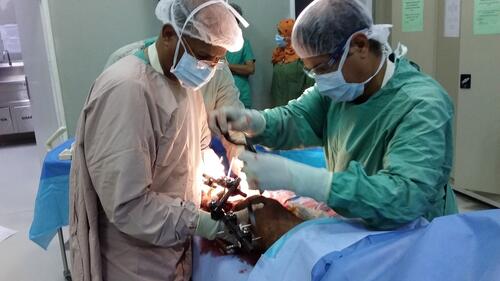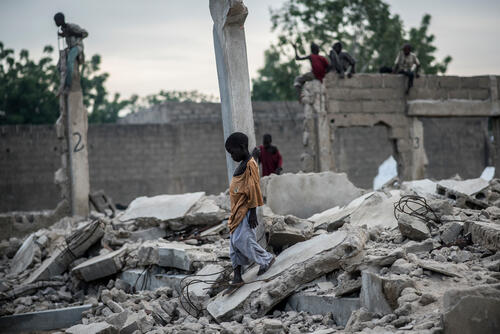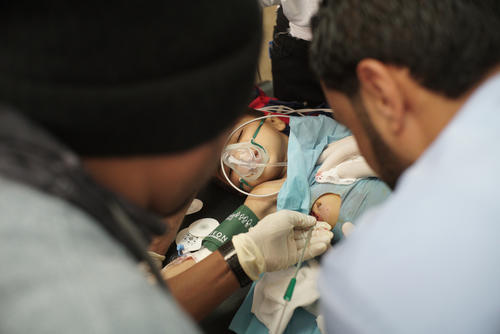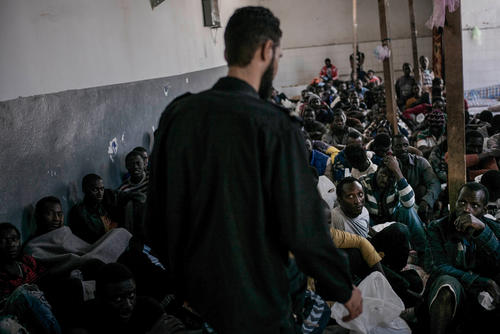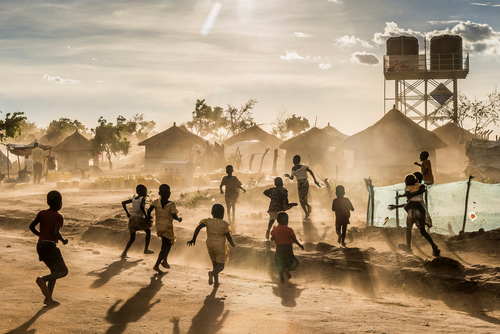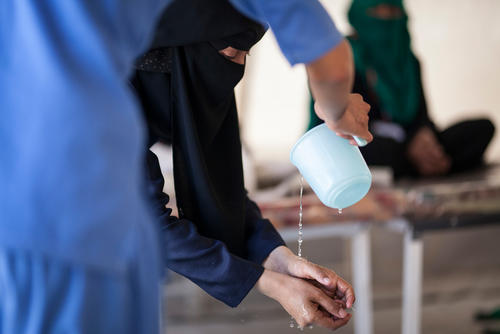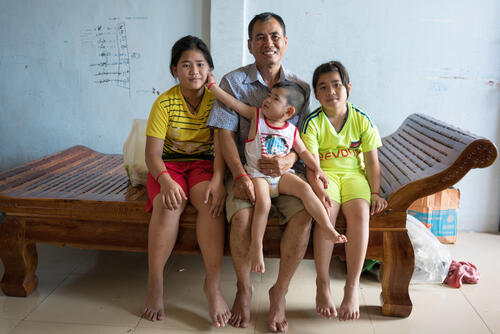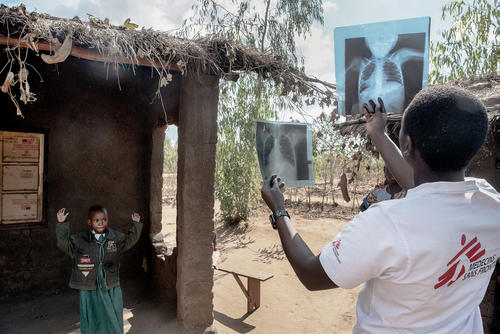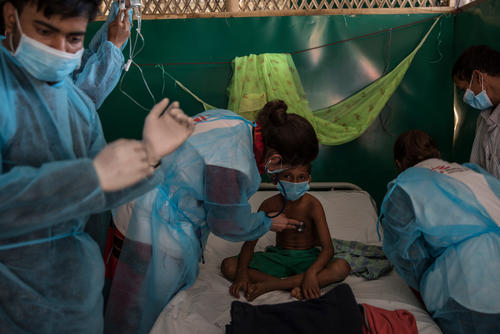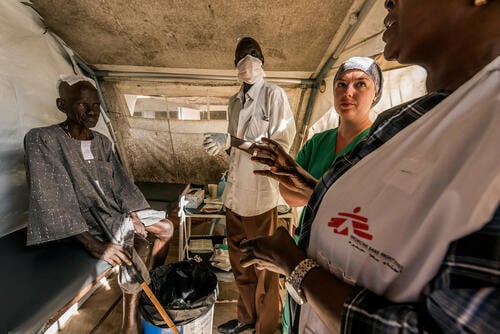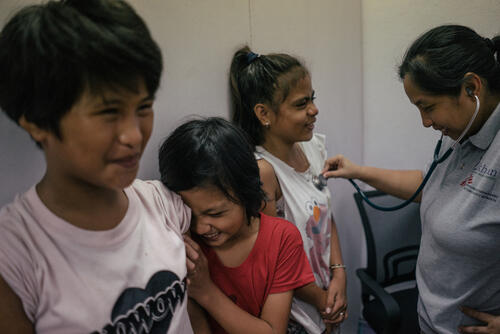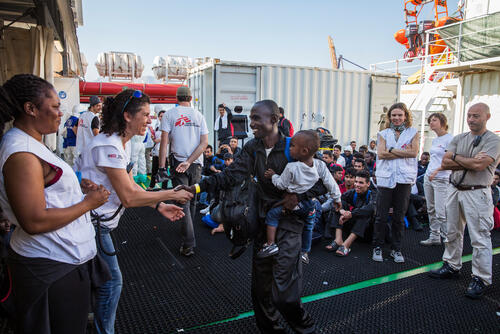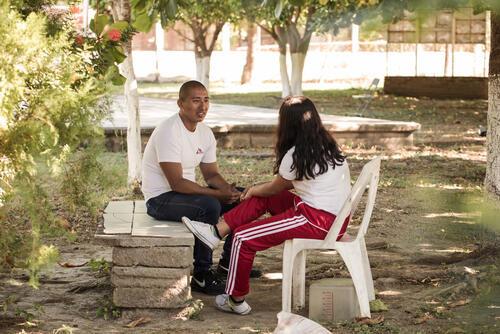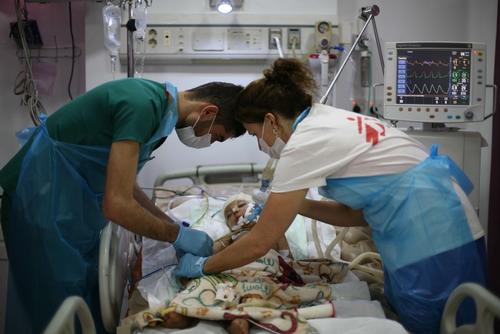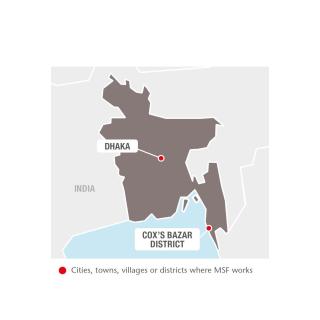
309,900
309,9
30,800
30,8
10,600
10,6

1,300
1,3
600
6
Assisting Rohingya refugees in Cox’s Bazar
A concerted campaign of violence unleashed by the Myanmar military against the Rohingya in Rakhine state from 25 August prompted more than 660,000 people to flee across the border into Cox’s Bazar district, Bangladesh, by the end of 2017. This brought the total Rohingya refugee population in the country to over 830,000. Most Rohingya reside in precarious shelters in heavily congested settlements prone to mudslides and flooding, where the hygiene and sanitation conditions are dire, and there is a shortage of clean drinking water.
In response to the huge growth in needs, MSF massively scaled up its operations in Cox’s Bazar. By the end of 2017, MSF was managing 19 health posts, three primary health centres and four inpatient facilities. Between July and December, the number of patients seen by MSF teams each day had increased from approximately 200 to over 2,000. The main conditions treated were respiratory tract infections, diarrhoeal diseases and infant malnutrition, which directly correlate with the abject living conditions in the settlements.
By the end of the year, thousands of people with suspected cases of measles and diphtheria had sought care at MSF facilities. As well as treating over 2,624 patients for diphtheria, teams started active case investigation in most of the settlements where they worked – to identify further cases, collect information on the number of residents in the patient’s household and on any other contacts made prior to presentation. Contacts of patients with diphtheria were treated prophylactically with antibiotics. MSF opened a number of diphtheria treatment centres, such as in Rubber Garden, near Kutupalong makeshift settlement, where suspected cases could be monitored and treated.
MSF increased the number of beds in its existing facilities in Kutupalong and its newly built health facility in Balukhali. A 50-bed hospital opened by MSF in Tasnimarkhola settlement was the only one offering inpatient care in the area. Another inpatient facility scheduled to open near Moynarghona makeshift settlement was still functioning as a temporary 85-bed diphtheria treatment centre in December.
As part of preparedness plans for potential outbreaks of cholera or other diarrhoeal diseases, MSF identified sites for treatment units in Balukhali, Hakimpara, Jamtoli and Unchiprang.
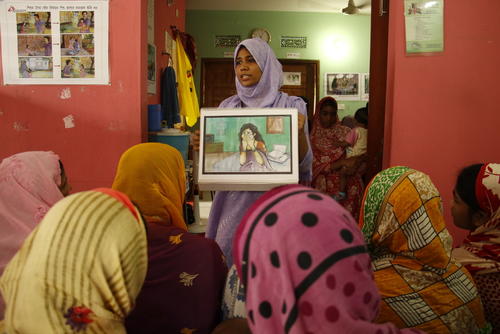
MSF also increased its water and sanitation activities, which in 2017 included supplying some 8 million litres of chlorinated water and installing more than 1,700 latrines and 170 wells across the settlements in northern and southern Cox’s Bazar. In addition, staff ran hygiene promotion activities, and distributed soap. Teams were deployed at arrival, transit and settlement locations to ensure that newly arrived refugees had access to safe drinking water and adequate sanitation facilities.
MSF worked with the Bangladeshi Ministry of Health and Family Welfare to extend vaccination coverage among the Rohingya. The ministry completed a measles and rubella vaccination campaign in early December, which MSF supported with community mobilisation, site identification, logistics and transportation of vaccines. It targeted more than 330,000 children aged between six months and 15 years. Over 156,000 people in Kutupalong and 41,000 in Balukhali were vaccinated.
Between 25 August and 31 December, MSF treated 120 victims of sexual violence in its sexual and reproductive health units. Over 80 per cent of these patients were rape victims and over one-third were under the age of 18.
In December, MSF published results from six surveys it conducted in refugee settlements in Bangladesh. They revealed that at least 9,000 Rohingya died in Myanmar, in Rakhine state, between 25 August and 24 September 2017. As 71.7 per cent of the reported deaths were caused by violence, at least 6,700 Rohingya, in the most conservative estimations, were estimated to have been killed, including at least 730 children under the age of five. Cause of death by shooting accounted for 69.4 per cent of all these deaths; being ‘burned to death at home’ accounted for 8.8 per cent; being beaten to death accounted for 5 per cent; sexual violence leading to death for 2.6 per cent; and death by landmine for 1 per cent. These surveys provide epidemiological evidence of high rates of mortality among the Rohingya population due to violence, and suggest that mass killings took place in Rakhine. MSF has routinely collected accounts by refugees who arrived in Bangladesh after 25 August to better understand the circumstances of their flight and the patterns of violence to which they have been exposed.
At the end of 2017, Rohingya continued to seek refuge in Bangladesh and a significant increase in humanitarian aid will be needed in 2018.
Kamrangirchar slum
In 2017, MSF treated 6,996 patients in the occupational health programme for factory workers it runs in Kamrangirchar slum, on the outskirts of the capital, Dhaka. Reproductive healthcare services for women and girls are also available as part of the project. The team carried out 10,055 antenatal consultations and 4,371 family planning sessions, and assisted 974 deliveries. In addition, they treated more than 400 victims of sexual violence and conducted over 2,300 mental health consultations.




